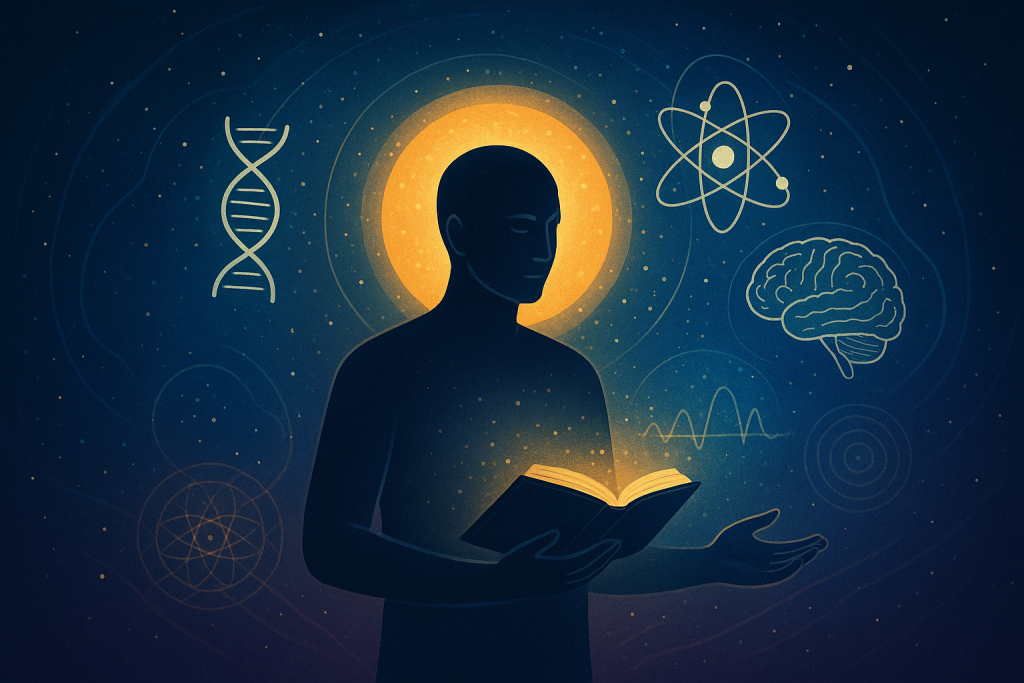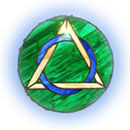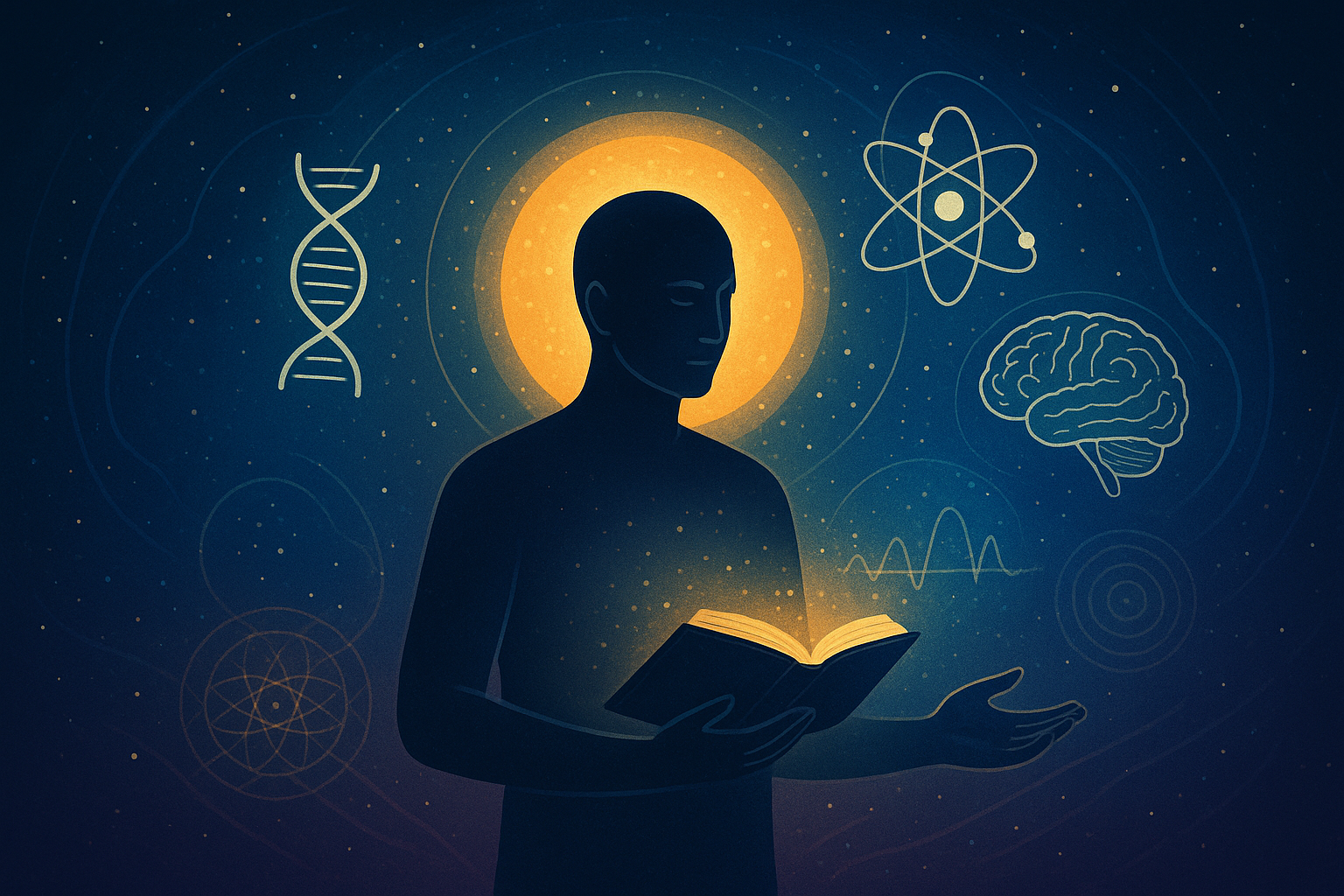Spiritual Science: Bridging the Seen and Unseen
In today’s world, science and spirituality are often presented as two opposing forces: one rooted in rationality and evidence, the other in faith, intuition, and personal experience. Yet a growing number of thinkers, mystics, and scientists are asking a deeper question: What if science and spirituality are not opposites, but complementary ways of understanding reality? This convergence is sometimes called spiritual science—an exploration of the invisible dimensions of life through both inner experience and outer investigation.
What Is Spiritual Science?
At its heart, spiritual science seeks to unify two approaches to truth. On one side stands science, with its methods of observation, experimentation, and repeatable results. On the other is spirituality, which relies on inner exploration, meditation, and lived experience of the sacred. Spiritual science does not replace one with the other; rather, it attempts to build a bridge where both perspectives enrich each other.
Rudolf Steiner, the Austrian philosopher and founder of Anthroposophy, was one of the first to coin the term spiritual science. He argued that just as the natural sciences study the material world, spiritual science should study the non-material realms of consciousness, meaning, and the soul—systematically, rigorously, and openly.
Today, the term has expanded. It covers research into consciousness, near-death experiences, quantum physics, meditation, healing practices, and the mysteries of human potential.
Why the Divide Exists
The tension between science and spirituality is centuries old. During the Enlightenment, scientific thinkers emphasized reason and dismissed many spiritual claims as superstition. The rise of materialism—seeing the universe only as matter and energy—pushed spirituality to the margins.
But spirituality never disappeared. People continued to have mystical experiences, profound moments of insight, and encounters that seemed to transcend the physical. Organized religions may have struggled with modernity, but personal spirituality thrived. And now, as science explores consciousness, complexity, and quantum reality, the sharp lines between the material and the spiritual are beginning to blur.
The Meeting Point: Consciousness
Perhaps the most exciting arena where spiritual science emerges is in the study of consciousness. Science can map brain activity, but it still cannot explain how subjective experience—the feeling of being alive—arises. This is known as the “hard problem of consciousness.”
Spiritual traditions, on the other hand, have studied consciousness for thousands of years through meditation, prayer, and inner disciplines. Yogic texts, Buddhist sutras, and mystical writings all describe states of awareness that modern neuroscience is only beginning to measure.
Meditation research, for example, has shown that contemplative practices can rewire the brain, reduce stress, and even change genetic expression. Here, science validates spiritual practices, while spirituality gives science new questions to ask.

Spiritual Science in Practice
How does spiritual science affect daily life? Here are a few areas where it is already reshaping human experience:
1. Healing and Wellness
Holistic medicine recognizes the mind-body connection long emphasized in spiritual traditions. Practices like Reiki, yoga, acupuncture, and mindfulness meditation are increasingly studied scientifically. Many hospitals now integrate these therapies, recognizing that healing involves more than just the body—it includes emotions, beliefs, and spirit.
2. Energy and Vibration
Science acknowledges that everything is energy, vibrating at different frequencies. Spiritual traditions take this further, suggesting that our thoughts and emotions carry vibrational qualities that affect both our health and the world around us. While measuring “spiritual energy” remains elusive, studies on the placebo effect, intention, and heart coherence suggest that consciousness does indeed influence physical outcomes.
3. Environmental Awareness
Spiritual science reminds us that the Earth is not just a resource but a living system we are deeply connected to. Ecology and systems theory show how interdependent life is, echoing ancient spiritual teachings of oneness. This fusion is inspiring new forms of environmental activism rooted in reverence for the planet as sacred.
4. Human Potential
Spiritual science explores abilities beyond the ordinary—intuition, telepathy, creativity, and peak performance. While mainstream science may be cautious, research in parapsychology and transpersonal psychology continues to investigate these frontiers. Athletes, artists, and entrepreneurs often describe entering “flow states” that mirror mystical experiences.
Visit our ESP Lab website to take a deep dive.
Criticisms and Cautions
Not everyone embraces the idea of spiritual science. Critics argue that spirituality often makes claims that cannot be tested or verified. They caution against pseudoscience and the risk of believing in comforting ideas without evidence. On the other hand, rigid scientific materialism can dismiss profound human experiences as mere illusions, leaving people spiritually unfulfilled.
The challenge, then, is to avoid both extremes. Spiritual science works best when it honors the rigor of scientific inquiry while remaining open to mystery. It requires humility: the recognition that we do not yet know the full nature of reality.
Toward a New Paradigm
As humanity faces global challenges—climate change, inequality, technological disruption—we need more than technical solutions. We need wisdom, compassion, and a sense of meaning. Spiritual science points toward a paradigm shift: from seeing ourselves as isolated individuals in a mechanical universe to recognizing ourselves as conscious beings in an interconnected, evolving cosmos.
This new paradigm invites us to ask big questions:
- Is consciousness a product of the brain, or is the brain a receiver of consciousness?
- Can intention and prayer influence outcomes beyond coincidence?
- What hidden dimensions of reality await discovery when we combine inner and outer methods of exploration?
These questions may not have final answers, but they spark curiosity and creativity—the hallmarks of both science and spirituality.
How to Explore Spiritual Science Personally
You don’t need a laboratory to engage with spiritual science. You can begin right now, in your own life:
- Practice meditation or mindfulness. Observe your consciousness directly. Notice how awareness changes your experience.
- Keep a journal of synchronicities. Pay attention to meaningful coincidences and patterns in your life.
- Study both science and spirituality. Read widely—from neuroscience to mysticism—to see how the pieces connect.
- Experiment. Try different practices—yoga, chanting, visualization—and observe the effects without judgment.
- Stay grounded. Balance openness with discernment. Question everything, but don’t close yourself off to possibility.
Conclusion: A Science of the Spirit
Spiritual science is not about choosing sides. It is about weaving together the precision of science and the depth of spirituality into a larger tapestry of understanding. In doing so, it honors both the measurable and the mysterious, the seen and the unseen.
In an age where division and disconnection are common, spiritual science reminds us that reality is one integrated whole, and that we, as conscious beings, are part of an unfolding mystery far greater than ourselves.
The future of human knowledge may not lie in science or spirituality, but in their union—a science of the spirit that expands our vision of what it means to be truly alive.

